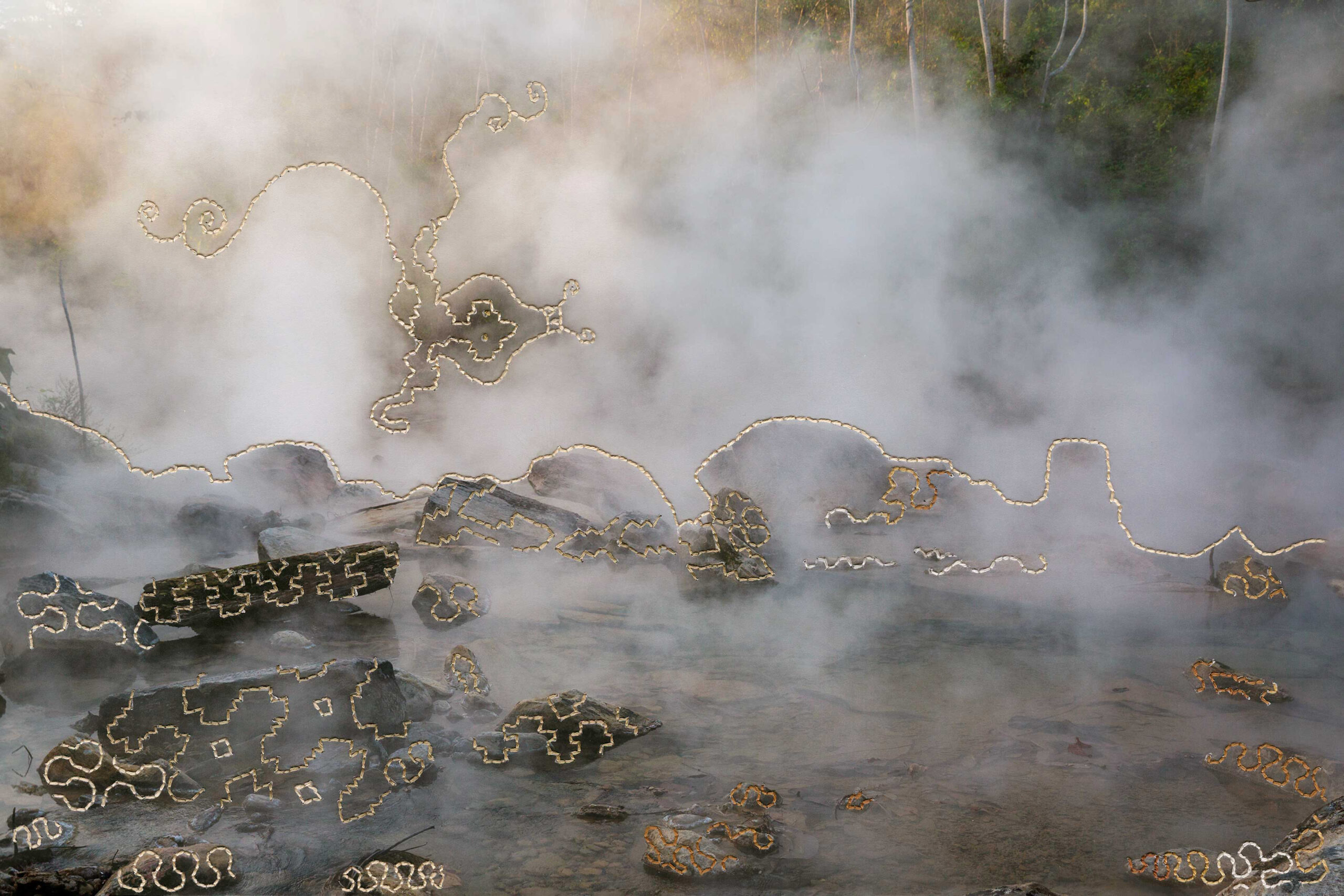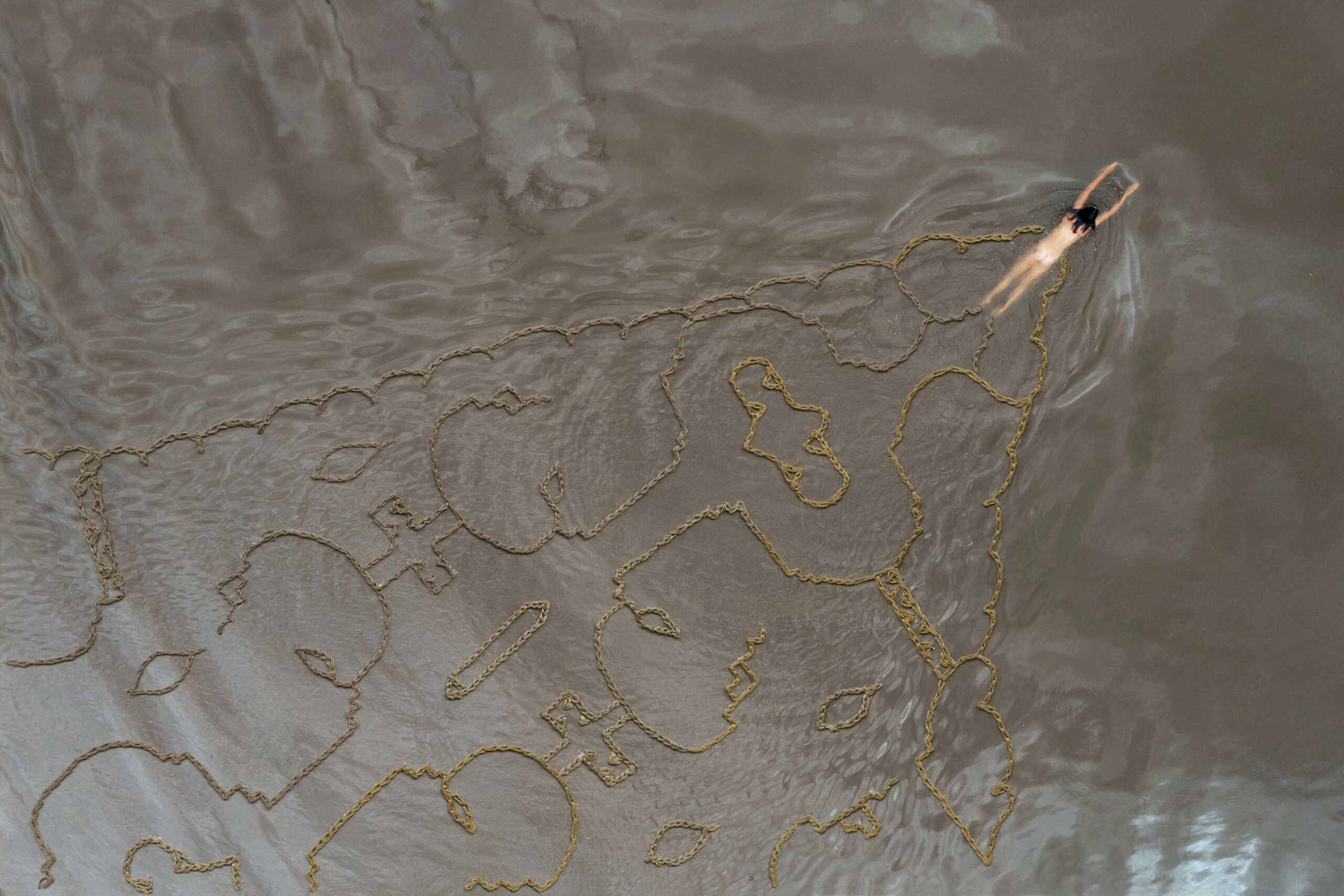Seconded By: Lars Boering,
“Portraits of the Multiverse” is a visual investigation between Sadith Silvano, master of the Shipibo “Kené’’ artform and myself. Started in 2022, the project generates a visual dialogue about the Amazonian multiverse by combining photography with ancestral Kené embroidery. Our collaboration addresses sustainability from an environmental and cultural perspective, questioning the colonial fracture that separates the human from the non-human when considering the natural world. By incorporating this ancestral language into images, the series invites the viewer to consider memory and spirit in contemporary representations of the Amazon.
The photographs, captured on the banks of the Shanay-Timpishka and Nanay Rivers, represent nearly eight years of my exploration with healing in the Amazon rainforest. In them, I showcase elements of Amazonia using photography while Sadith reveals the immaterial energy that flows across the jungle using kené embroidery. Kené, the visual language of the Shipibo people, represents the invisible energy of their universe. In a transition from the invisible world to the visible and back to the invisible, this series develops a dialogue about the Amazonian multiverse. The resulting series is a visual encounter between two languages that capture light through different means: photography and embroidery .
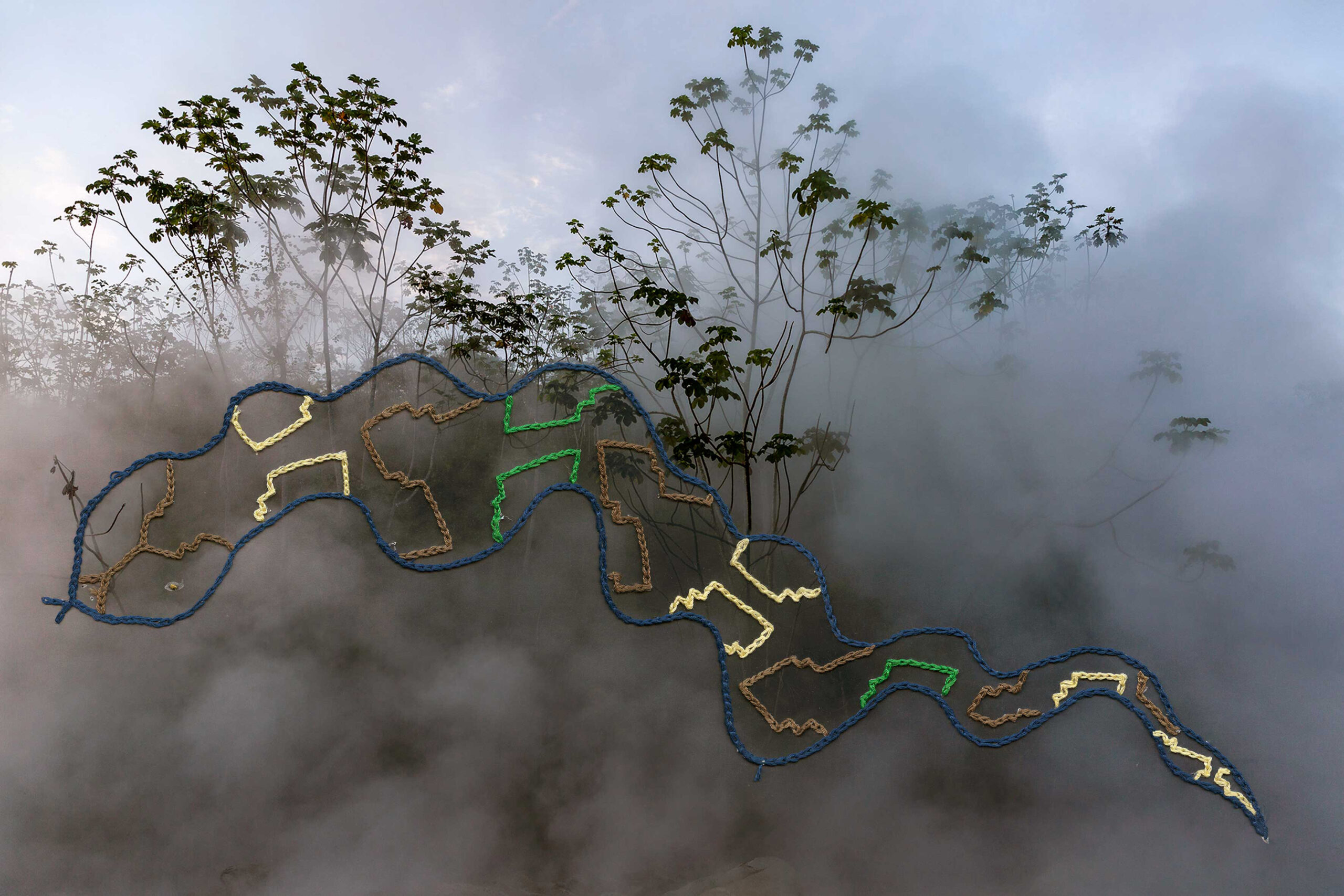
Ronin, Serpent Spirit of the Universe
The image captures dawn over the Shanay Timpishka, a sacred River in the Ucayali Basin of Peruvian Amazon. Atop the photograph and in between the steam Kené embroidery represents Ronin, the serpent spirit and “cosmic mother” of the river and Shipibo universe
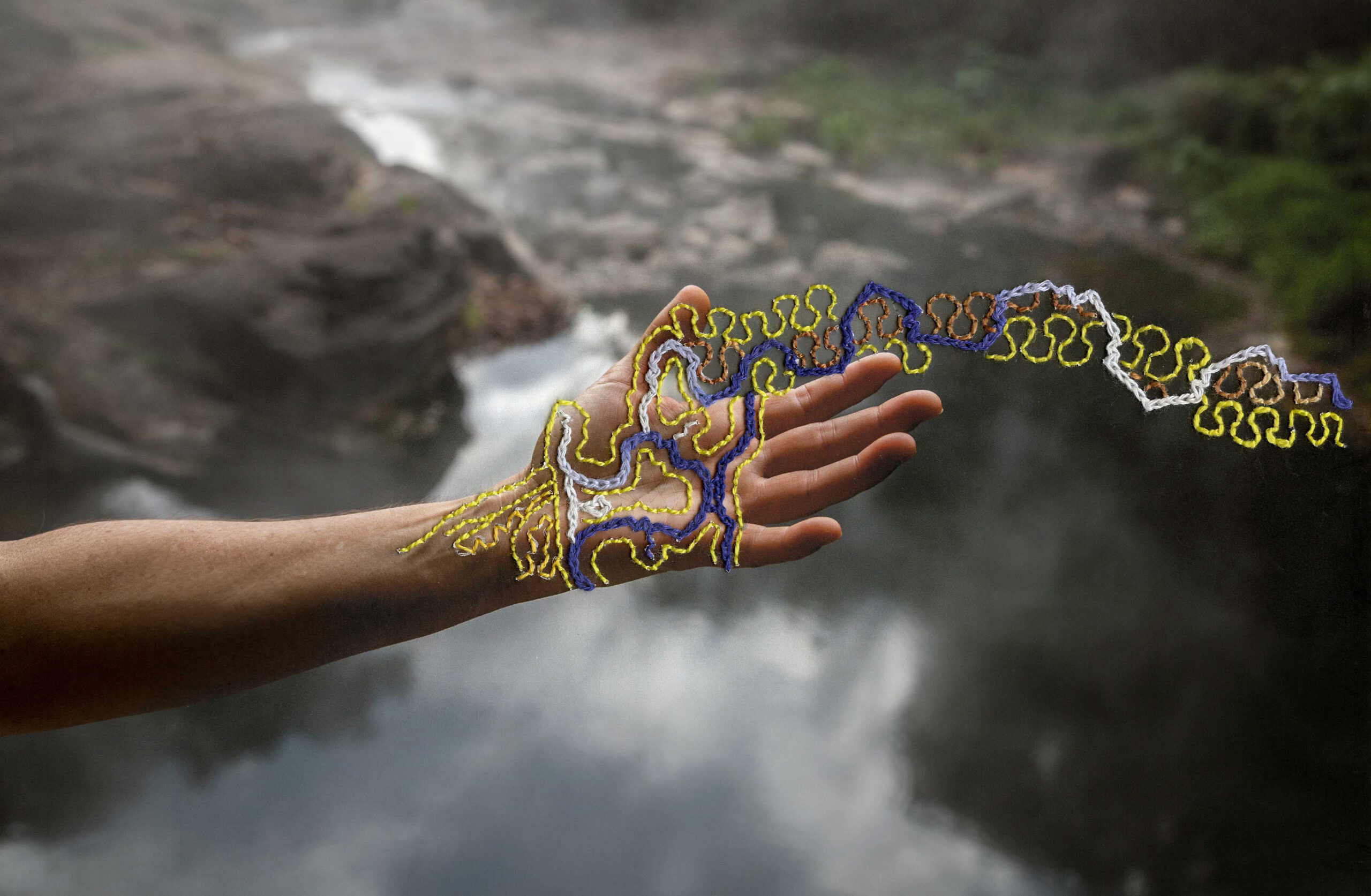
Petition to the Plant Spirits
This image represents my petition to the plant spirits to heal my back pain.
Atop the image, embroidery of the flow of Kené, connecting the plant spirits to the hand. The designs enter the photograph through its frame with a thick line tinted with blue, which moves in steps with broken angles and is superimposed on a thinner golden line, which moves in curves. Both threads arrange themselves on the palm of the hand forming a head-shaped pattern. Then, the golden embroidery frays over the wrist. It gives the impression of floating above its veins or, depending on how you look at it, of surging from its blood as a spring of Kené dancing up into the sky.
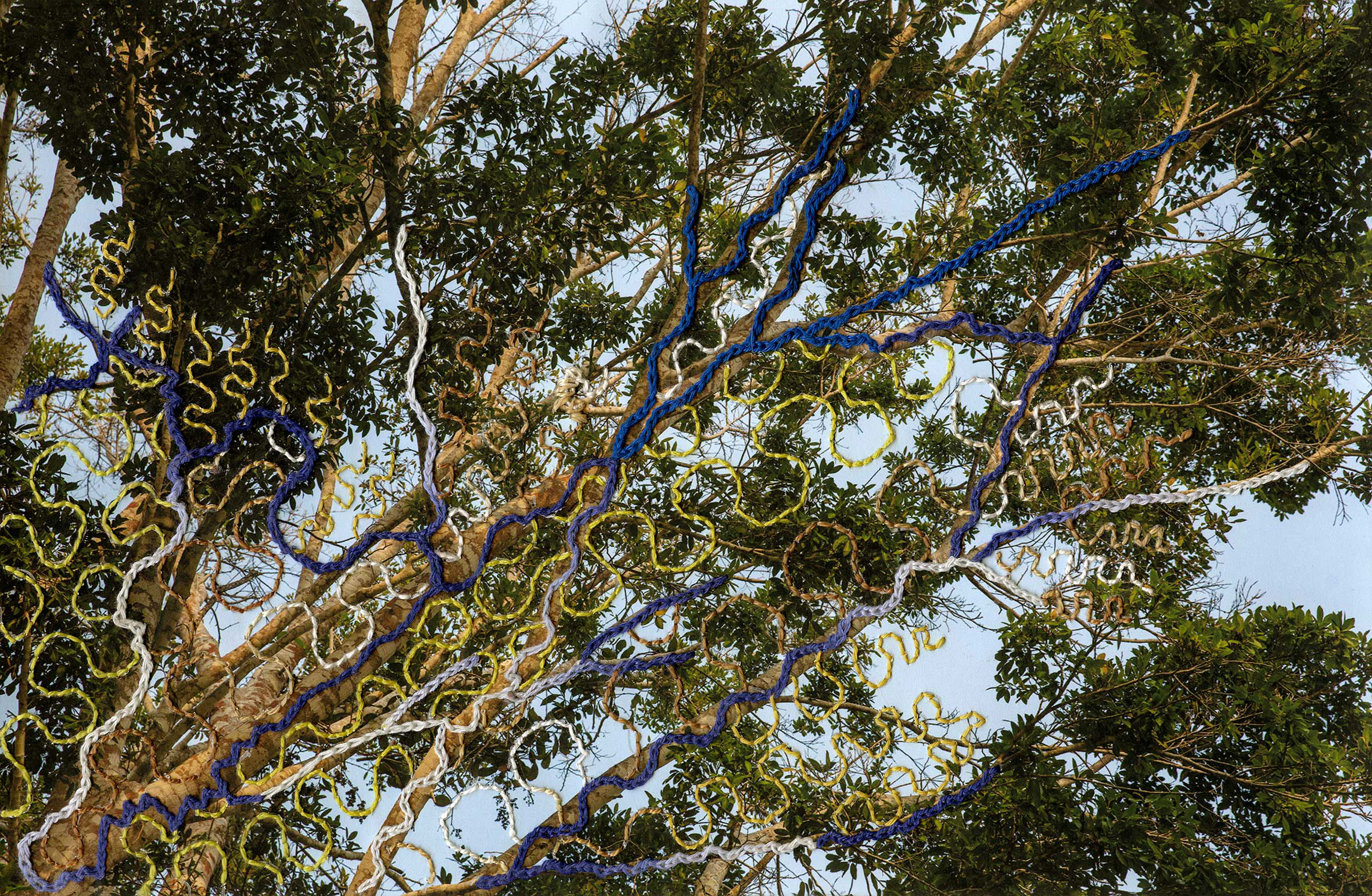
Came Renaco, Healing Tree
A photograph of the Came Renaco Tree, a tree used to prepare traditional medicine, that grows on the banks of the Shanay Timpishka River. In Shipibo tradition, when undergoing traditional healing, the patient must enter a spiritual relationship with the spirit of the plant. A top the image, kené embroidery representing the plant’s energy circuits and spirit, illuminated through traces of color. The kené flows to and from the plant to the hand in the previous image.
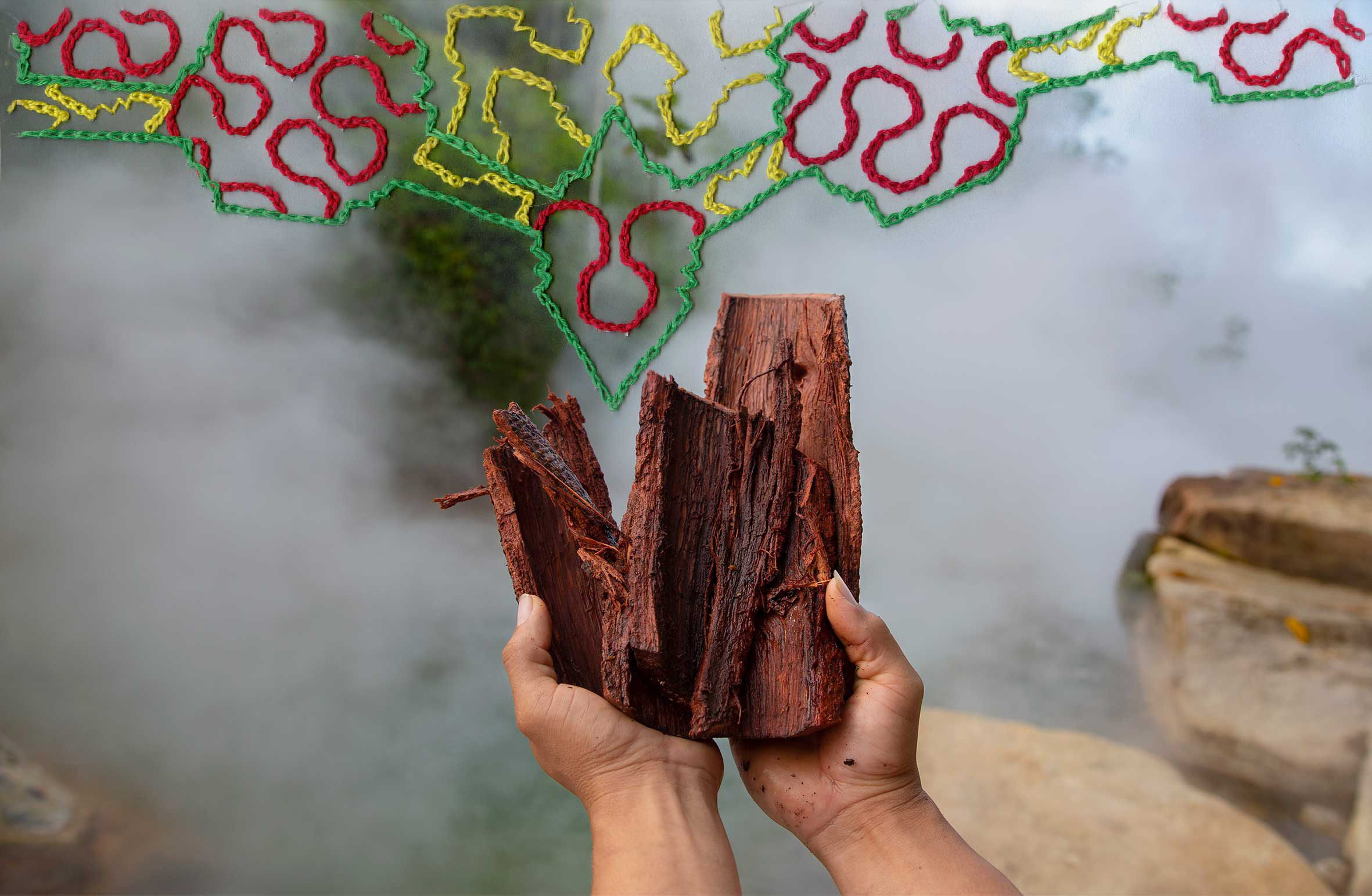
Came Renaco Bark for Preparing Medicine
Mario, a healer, holds Came Renaco bark, which will be used to prepare traditional medicine on the banks of the Shanay Timpishka River. While preparing the medicine, Mario petitions to the spirit of the Came Renaco. In Shipibo tradition, the plant spirit communicates with the Ayahuasca, master plant, during the healing ceremony.
The kené embroidery is done with red, yellow and green threads, symbolizing a connection between the Came Cenaco, Ayahuasca and the River.
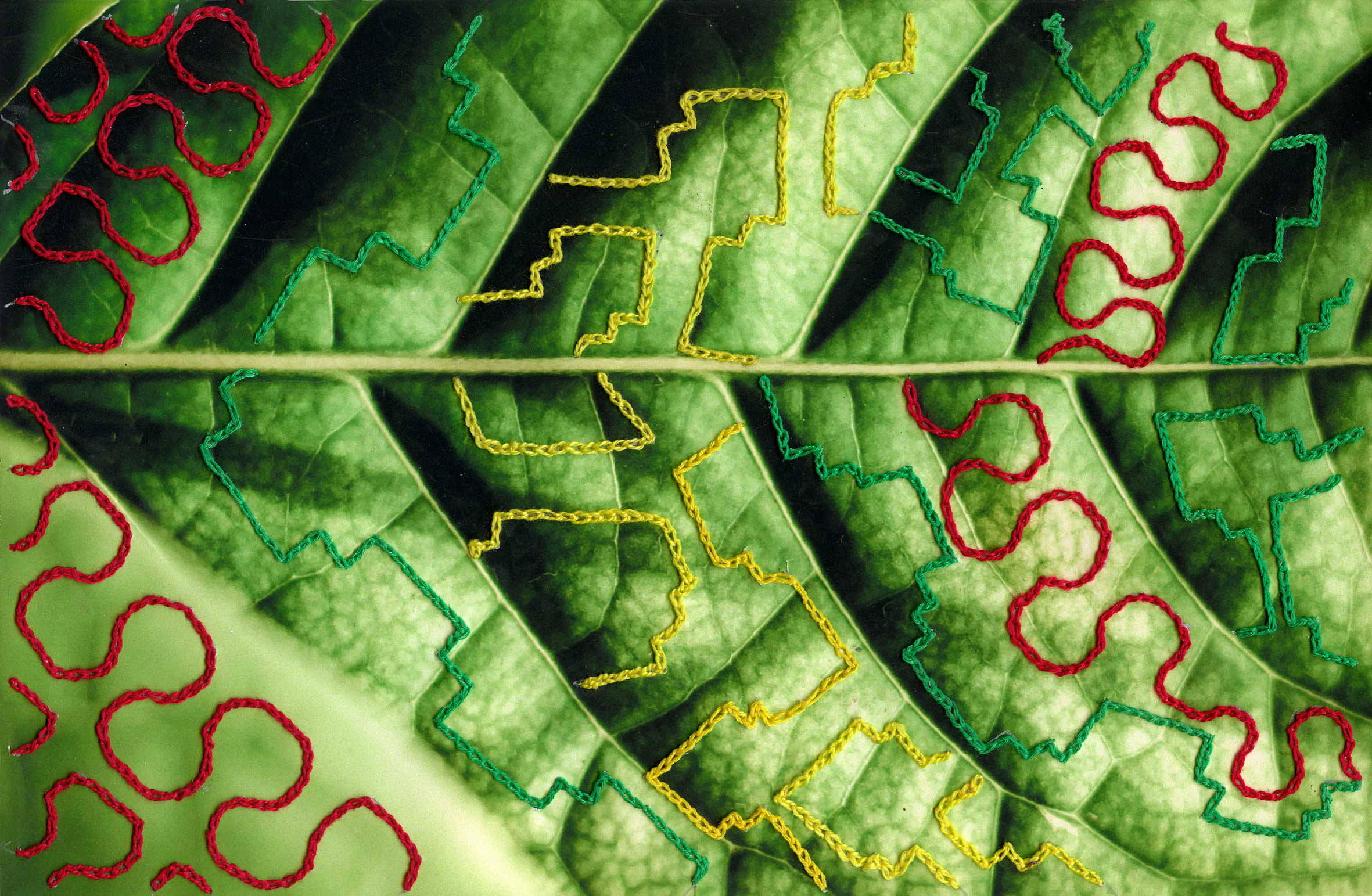
Ayahuasca, Master Plant
A close up photograph of an Ayahuasca leaf. The image shows the natural geometric patterns found on the leaf. To the Shipibo, the plant Ayahuasca is one of the master teaching plants. Atop the image Sadith embroidered kené visions with red, yellow and green threads. She uses some more recent curved designs as well some older designs with right angles, placing their lines “face to face”. To her, this duality, “represents us, humans”.
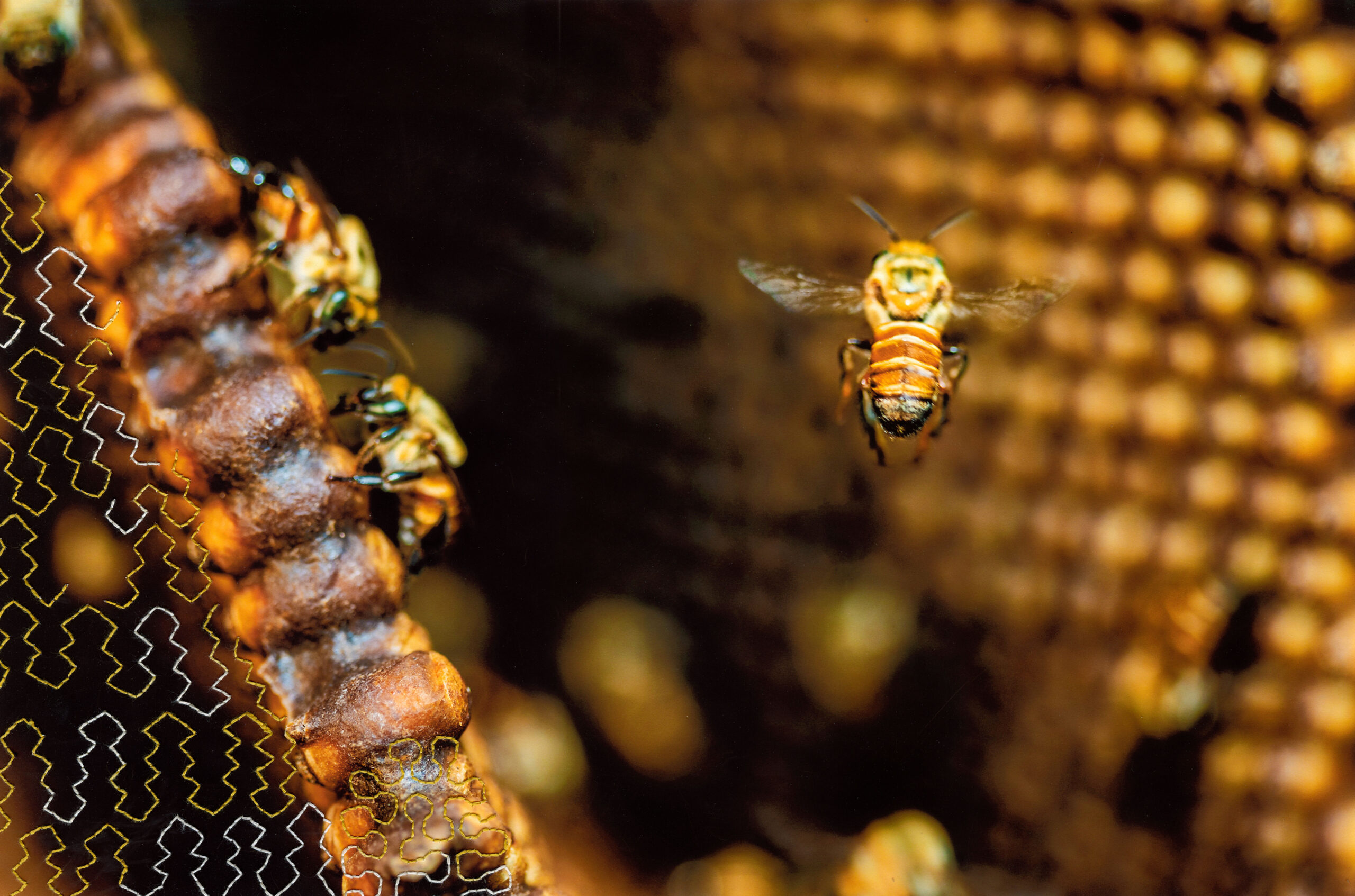
Melipona
Inside the hive of Amazonian Stingless bees, a species that is vital to preserve forest health and who’s honey is used for medicinal purposes. The kené emerges from the bottom of the hive, expanding towards the bee.
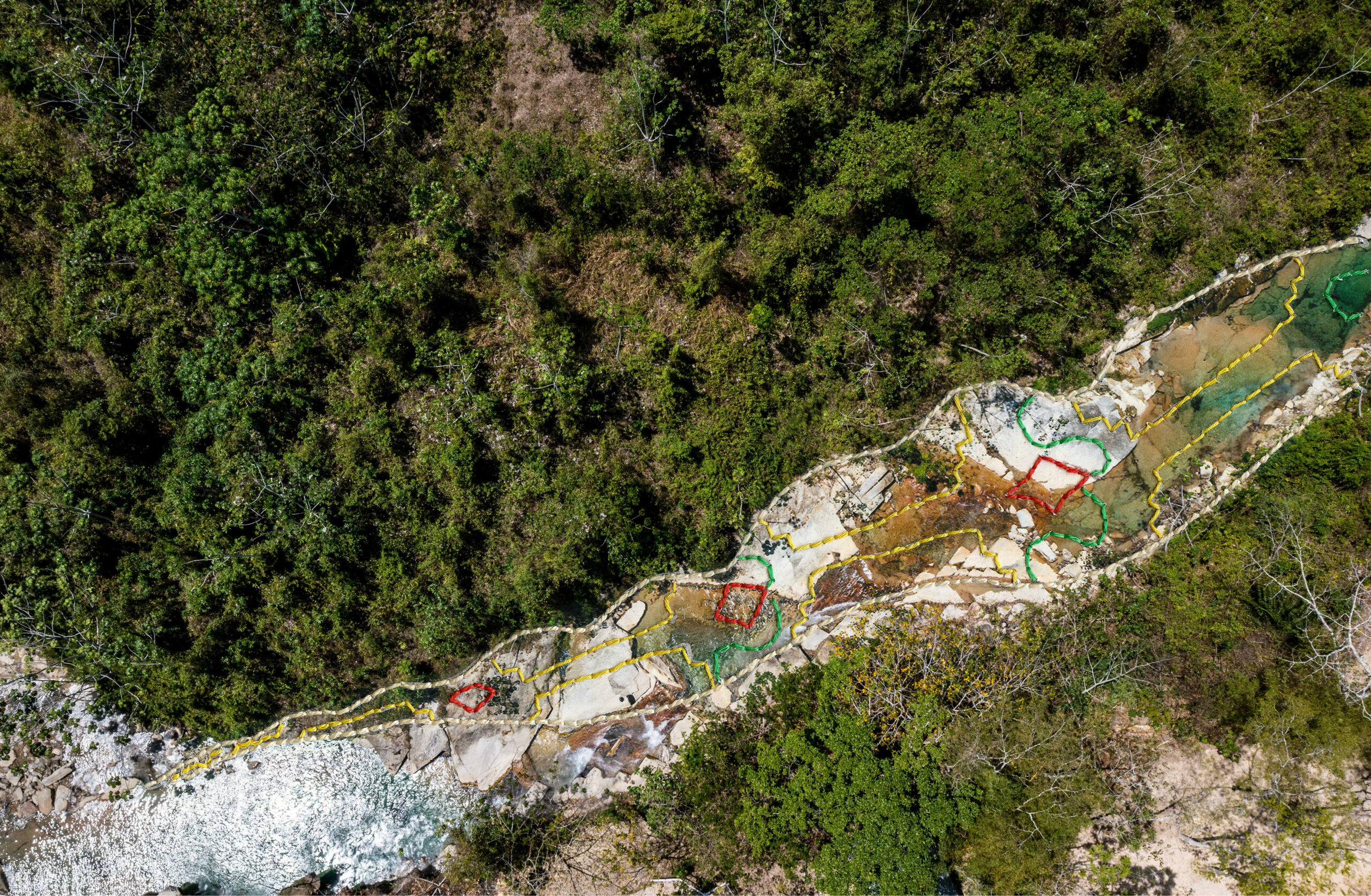
The Shanay Timpishka River (image 1 of 2-image diptych)
Two aerial photographs placed side by side of the Shanay Timpishka River. Near the bottom right, the spirit of the serpent is believed to live. The patterns formed along the river emulate the skin of the snake. Atop, kené invites the viewer to flow along with multiplicity knowing that the visible and the invisible coexist in motion, outlining the serpent.
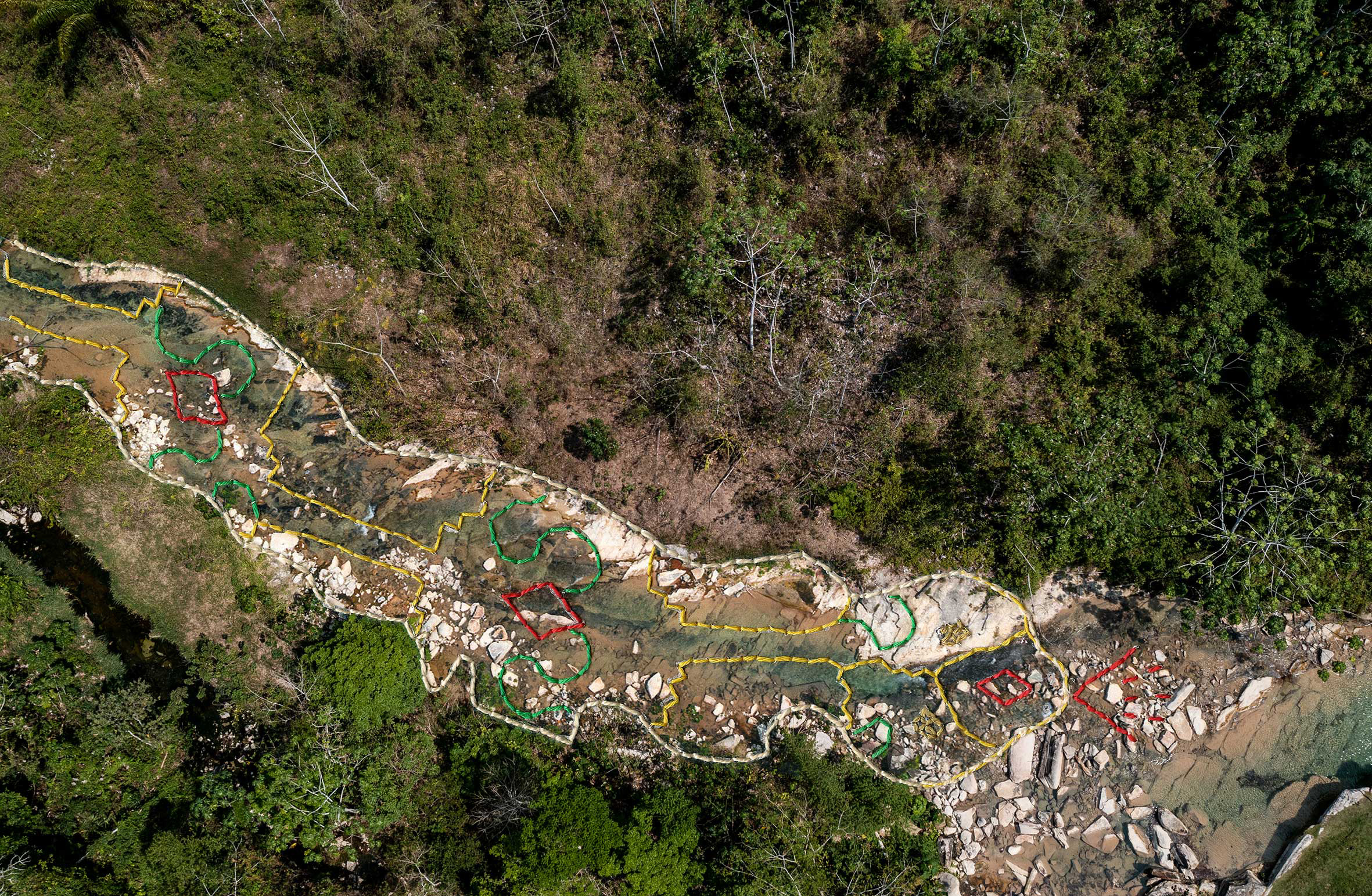
The Shanay Timpishka River (image 2 of 2-image diptych)
Two aerial photographs placed side by side of the Shanay Timpishka River. Near the bottom right, the spirit of the serpent is believed to live. The patterns formed along the river emulate the skin of the snake. Atop, kené invites the viewer to flow along with multiplicity knowing that the visible and the invisible coexist in motion, outlining the serpent.
